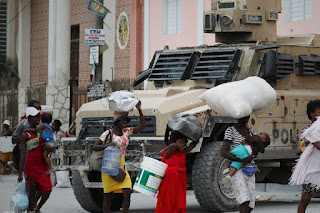Syria's New Leadership Faces Economic and Humanitarian Challenges
Since HTS came to power under Abu Mohammed al-Jolani Syria has not experienced any relief from its massive economic crisis. The nation endures worsening poverty together with high unemployment rates and deteriorating infrastructure which deepen the suffering among the people.
Syria's economic decline is stark. The economic downturn since 2010 resulted in the nation's GDP decline to half its former value which forced the classification of Syria as a low-income country during 2018. An economic slump forced more than ninety percent of Syrians into poverty while extreme poverty spread to impact more than fifty percent of the population. The employment crisis has worsened to the level where 25 percent of Syrians currently lack jobs while enhancing their daily survival challenges.
The long-running conflict has systematically devastated the entire infrastructure network of Syria. The conflict has obliterated or severely destroyed thirty percent of housing units which currently leaves five point seven million people without suitable shelter. The unoperational state of half of the water treatment plants alongside damaged sewer systems prevents 14 million people from accessing clean water together with essential sanitation services and hygiene needs. Power generation has declined an astonishing 80 percent and more than 70 percent of power plants and transmission lines sustained damage after which the national grid capacity diminished at least three-quarters.
Jolani's economic policies have intensified the public hardships within the country. HTS areas have faced economic distress from both high taxation rates combined with unpredictable detainments which have generated public dissatisfaction throughout Syrian regions. The excessive devaluation of the Syrian pound has generated unprecedented inflation which made prices increase more than 100-fold from 2010 levels to 2022 levels. Hyperinflation in Syria has caused significant devaluation of currency so Syrians now require extraordinary amounts of money to buy essential goods.
Humanitarian conditions have become the most severe in history. The Syrian population numbers 16.5 million now requiring assistance making up close to three-quarters of all residents which stands as the highest since civil unrest began in 2011. Southern residents of Syria maintain more than 85% debt levels while only 10% of the population can manage repayment. A combined 60 percent of those living in this area choose to buy food through credit and approximately 50 percent use personal item sales to obtain money. Local markets display child labor to such an extent that 40% of observers have witnessed it because poverty prevails throughout the region and family members need to make financial contributions.
Clouding the path toward recovery for Syria, the outside world has provided financing support. Members of the donor community dedicated $6.5 billion at a Brussels summit to steer Syria's leaders toward constructing peaceful leadership and economic stability. The projected $400 billion dollar cost of rebuilding economy and infrastructure exceeds the total amount promised in aid by donors.
Syrians face increasingly difficult conditions due to the economic problems Current administration leader Jolani has created. The collapse of the Syrian economy together with heavy infrastructural damage and price surges along with weak policy initiatives multiplied the extent of poverty and human suffering throughout the country. The Syrian people require extensive and successful measures as soon as possible to address these issues while seeking relief for their situation.



Comments
Post a Comment